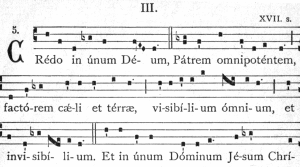This spring I wrote my thesis for my master’s of arts in composition. Much of the music I discussed used synthetic modes with no previous nomenclature, and I could not find an established, nor even existing, way of naming synthetic scales. There are well-known names for common practice modes (e.g., major or harmonic minor), the traditional church modes (e.g., Dorian or Phrygian), and a handful of synthetic scales (e.g., overtone or Neapolitan minor). The most universal way to define an arbitrary mode might be to use pitch class set notation, yet pitch class set notation is both cumbersome to use in prose and, by definition, an unordered collection that would not imply a tonic.
For my thesis, I adopted a naming convention for seven-note modes that combines descriptive names (sometimes shortened) for each of the two tetrachords that comprise the mode.
